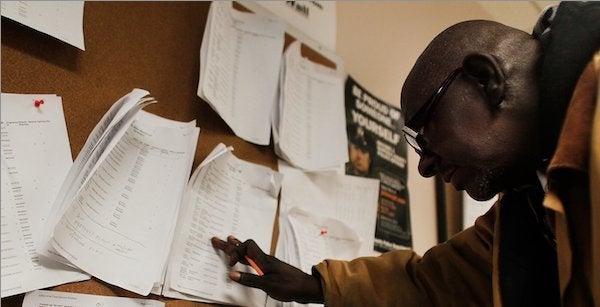
The U.S. economy added no new jobs in August as the unemployment rate stayed steady at 9.1 percent, the Bureau of Labor Statistics reported on Friday, the most concrete sign yet that the recovery has stalled out and a double-dip recession may well be on the way.
"We're treading water, going sideways, you can call it whatever you want; this report says we are not gathering momentum," said Wells Fargo economist John Silvia.
While Silvia said he doesn't think the U.S. is in another recession right now, he said he wouldn't be surprised if the economy enters into a recession in the near future. Signs of a slow growth economy -- GDP growth of around 1 percent, falling housing prices, weak manufacturing, stagnant high unemployment -- mean the U.S. economy is volatile and vulnerable.
"We're going to be very sensitive to any kind of shocks going forward," Silvia said. "Looking forward to some of the big events coming in the fall: a new congressional committee or another potential shock from Europe, yeah we could easily get into another dip."
While a portion of the weak headline number can be attributed to 45,000 Verizon workers who were on strike in mid-August and thus not counted as employed, the overall picture is still very weak -- and worse than the past several months of already low growth, economists say. Job gains in June and July were both revised down from 46,000 to 20,000 new jobs and 117,000 to 85,000 jobs, respectively.
Drill down into the government's report and the picture doesn't look any better.
In August, the average workweek for all employees edged down .1 hour to 34.2 hours, while average hourly earnings for private employees decreased by 3 cents to $23.09. Meanwhile, the ranks of those involuntary part-time workers -- who seek, but are unable to find a full time position -- swelled to 8.8 million from 8.4 million.
"High unemployment doesn't just hurt the unemployed, it hurts jobs holders as well because of the absence of any pressure on wage growth" said Jared Bernstein, a former Obama administration economist now at the Center on Budget and Policy Priorities. "It's a vicious cycle."
Hourly and weekly earnings, relative to inflation, have fallen during the past year. This creates problems, Bernstein said, in an economy that is still heavily reliant on consumer spending.
"The problem we face so far is that growth in the first half of the year was less than 1 percent," Bernstein said. "If you're growing that slowly, you're just not going to create enough jobs to provide people with the employment and earnings opportunities they need."
For several months last spring, the labor market appeared to be rebounding, with many experts pointing to gains in manufacturing serving as a positive signal for the broader economy. But that promise drained this summer as manufacturing stalled out. For the past two months, new orders in manufacturing -- the best predictor of future growth -- shrunk.
The number of those out of a job for six months or more remained above 6.0 million in August and accounted for 42.9 percent of the unemployed. A total of 2.04 million were out of work for 99 weeks -- the limit for jobless benefits in some states -- or longer, a slight rise from 2.01 million last month, according to BLS figures not in the report.
"Their horizon for a brighter day is moving away from them," said Carl E. Van Horn, a labor economist at Rutgers University and co-author of a recent report focusing on the long-term unemployed. "Their optimism has been crushed by reality: They are still not working, or if they are working they're making a lot less money. You're either devastated or you're hurting, that's the range."
Meanwhile, corporate profits remain at pre-recession levels of strength. Many experts say that robust corporate profits alongside stagnant wages and declining workweeks points to a grim future for America's workforce.
"Many companies have simply come to the conclusion that labor is just too expensive," said Bernard Baumohl, chief global economist at The Economic Outlook Group. "We are moving increasingly into a labor-less society."
While consumer spending still counts, Baumohl thinks that it will count for less and less going forward -- more than 50 percent of the S&P 500 companies' profitability already comes from overseas markets, he estimated.
"If you're a CEO and you look out over the next couple of years, what you see is that growth in the global economy will not be coming from the U.S.," he said. "So the one thing thing you don't want to do is hire a lot of American workers along with the baggage of higher health care costs and higher pensions, when you have absolutely no clue when the U.S. economy is going to start accelerating."
The challenge for the American business owner, Baumohl continued, is how to maintain profits while also employing workers.
"That has yet to be determined in this business cycle. We may not see that for a while," he said. "It is purely a rational decision, but it is a very disturbing one. From the standpoint of public policy this is not what you want to see."
